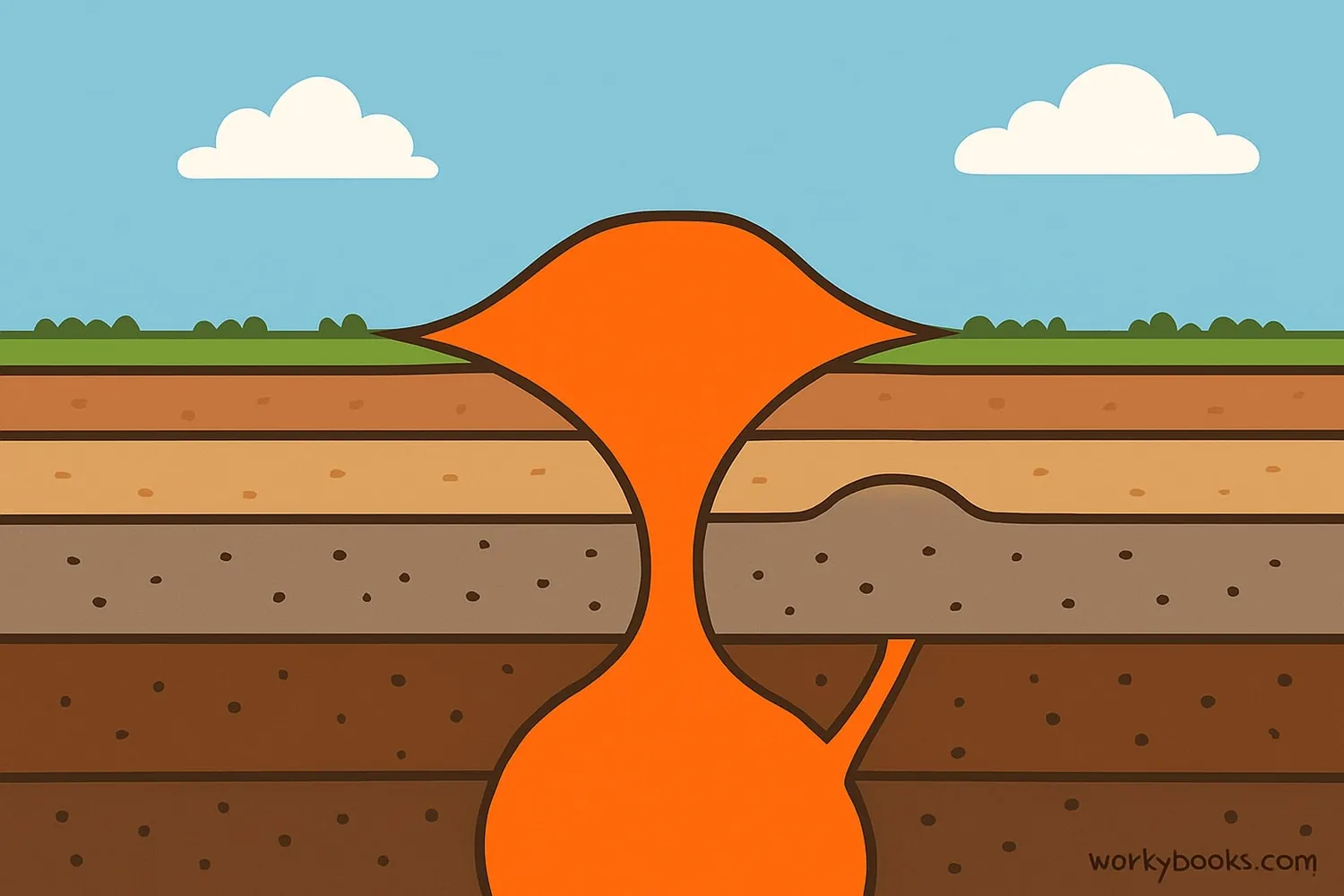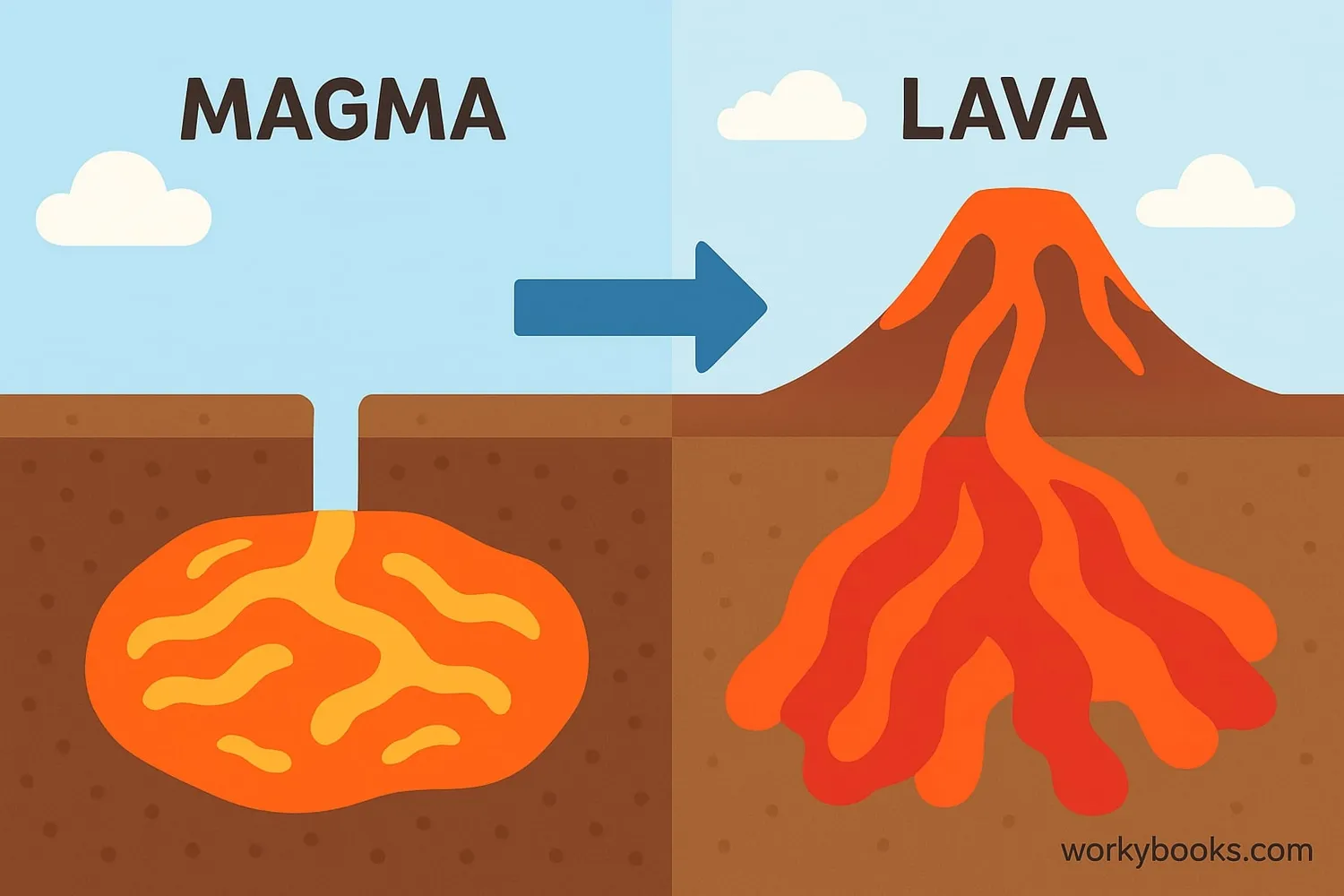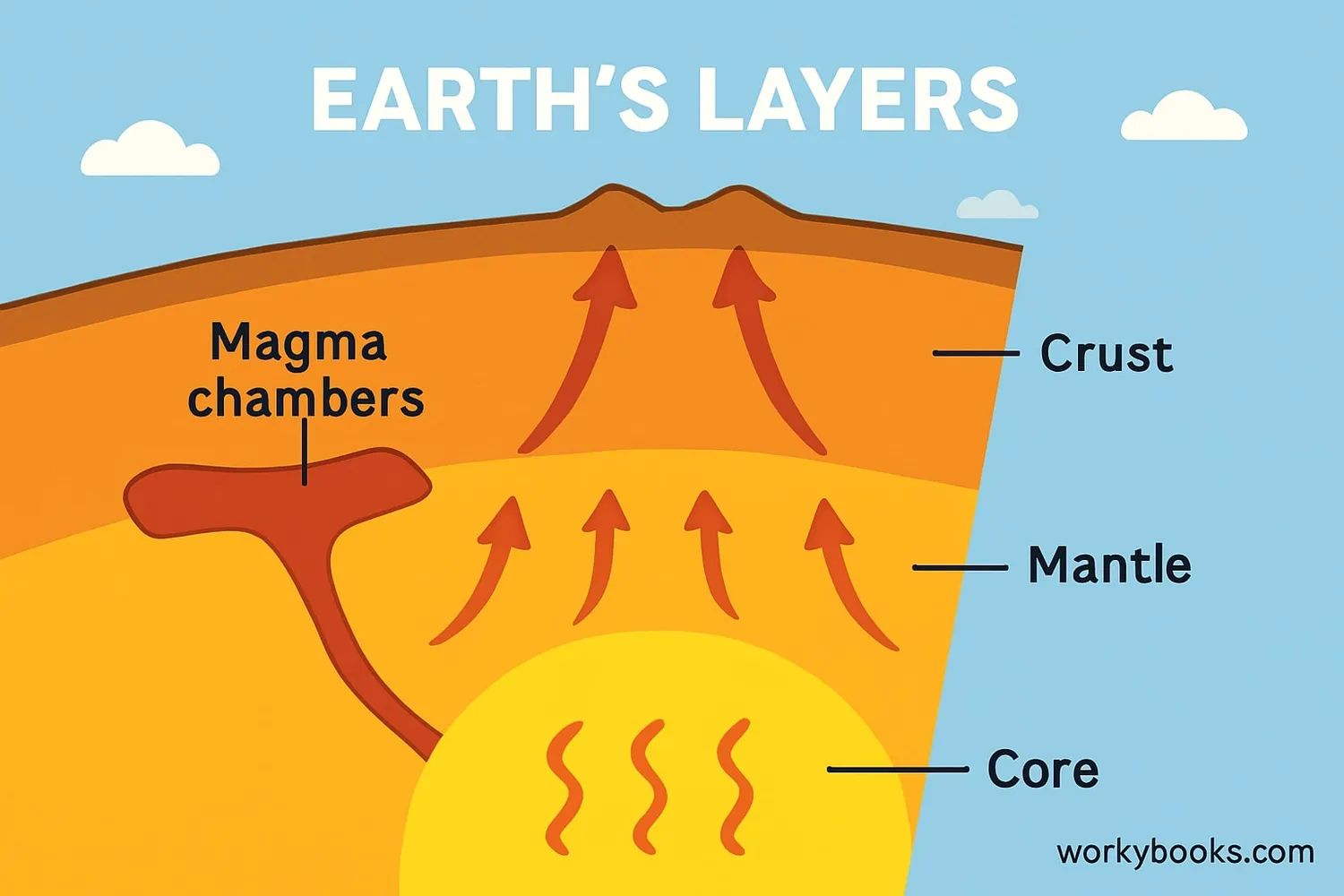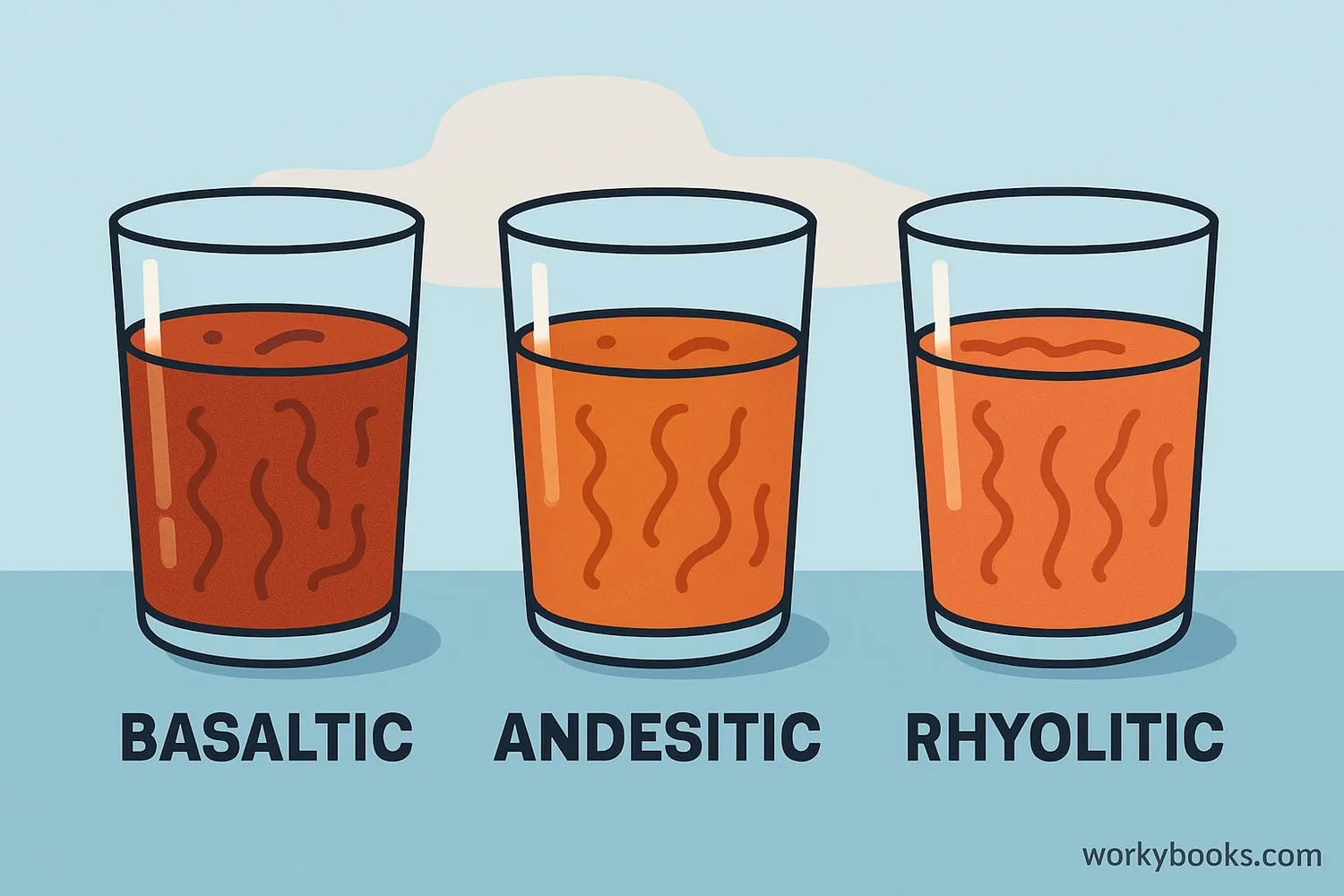Magma - Definition, Examples, Quiz, FAQ, Trivia
Discover the hot, molten rock beneath Earth's surface and how it shapes our planet
What is Magma?

Magma is extremely hot, molten rock found beneath Earth's surface. It forms when rocks in the Earth's mantle or crust melt due to intense heat and pressure. Magma is so hot that it can reach temperatures between 700°C and 1300°C (1300°F to 2400°F)!
Magma is made of three main components:
• Liquid rock (melted minerals)
• Solid crystals (minerals that haven't melted)
• Dissolved gases (like water vapor, carbon dioxide, and sulfur)
This molten rock collects in areas called magma chambers beneath volcanoes. When pressure builds up, magma can erupt onto Earth's surface through volcanic vents.
Did You Know?
The word "magma" comes from Ancient Greek and means "thick unguent" - referring to its thick, paste-like consistency!
Magma vs Lava: What's the Difference?

While magma and lava are both molten rock, they have one important difference based on their location:
Magma is molten rock that is still beneath Earth's surface. It's stored in magma chambers and hasn't reached the open air.
Lava is what we call magma after it erupts from a volcano and reaches Earth's surface. Once magma is exposed to air, it becomes lava.
When lava cools and hardens, it forms igneous rocks like basalt, granite, and obsidian. These rocks help scientists understand Earth's geological history.
Magma Formation
Rocks melt deep underground
Magma Chamber
Molten rock collects below surface
Volcanic Eruption
Pressure forces magma upward
Lava Flow
Magma reaches surface as lava
Cooling
Lava cools to form igneous rock
How Magma Forms

Magma forms deep beneath Earth's surface through three main processes:
Temperature Increase
Heat from Earth's core melts rocks as they go deeper
Pressure Release
When pressure decreases, rocks melt at lower temperatures
Water Addition
Water lowers melting point of rocks, causing them to melt
Most magma forms at tectonic plate boundaries:
• Divergent boundaries: Where plates pull apart, pressure decreases allowing melting
• Convergent boundaries: Where plates collide, water released causes melting
• Hot spots: Extra-hot areas in the mantle melt rock directly
The composition of magma depends on the type of rocks that melted to create it and how much they melted.
Magma Composition and Types

Scientists classify magma into three main types based on their silica content and temperature:
| Type | Silica Content | Temperature | Characteristics |
|---|---|---|---|
| Basaltic | Low (45-55%) | Very Hot (1000-1200°C) | Thin, flows easily, forms shield volcanoes |
| Andesitic | Medium (55-65%) | Hot (800-1000°C) | Medium thickness, moderately explosive |
| Rhyolitic | High (65-75%) | Cooler (700-900°C) | Thick, very explosive, forms calderas |
The amount of silica (a compound of silicon and oxygen) in magma affects its:
• Viscosity (how thick and sticky it is)
• Explosiveness (how violently it erupts)
• Temperature (how hot it is)
• Color when it cools into rock
Magma with high silica content is thicker and traps more gas, leading to more explosive eruptions!
Cooling Fact!
Magma can take thousands of years to cool completely underground, forming large granite formations like those in Yosemite National Park!
Magma Quiz
Test your magma knowledge with this quiz! Answer all 5 questions to see how much you've learned.
Frequently Asked Questions
Here are answers to some common questions about magma:
Magma Trivia
Discover some amazing facts about magma!
Massive Magma Chambers
The largest known magma chamber is beneath Yellowstone National Park. It's about 90km (56 miles) long and contains enough magma to fill the Grand Canyon 14 times!
Underwater Volcanoes
About 80% of Earth's volcanic activity happens underwater at mid-ocean ridges, where magma constantly creates new ocean floor at a rate of about 2.5cm (1 inch) per year!
Not Just on Earth
Magma exists on other planets too! Mars has the largest volcano in the solar system (Olympus Mons), and Jupiter's moon Io is the most volcanically active body with constant magma eruptions.
Ancient Magma
The oldest magma ever discovered is about 4.4 billion years old! Scientists found zircon crystals in Australia that formed from magma just 160 million years after Earth formed.





